Power consumption with Low Voltage Settings
And now butter with the fish lords! While the power consumption is the same for the lower loads (and clock rates) compared to the original card (within the tolerance limit), the decrease in the load range is almost alarmingly high! I measure in the same scene as with the original card in gaming almost 69(!) Watt less. And this with even slightly higher speed! And it doesn't matter if you work with Gurdis or my fan setting!
In the stress test, there is a little less than 60 watts difference, which is also a house number. And the performance in all scenarios does not even suffer from the reduced voltage, on the contrary, the beat now remains much more stable!
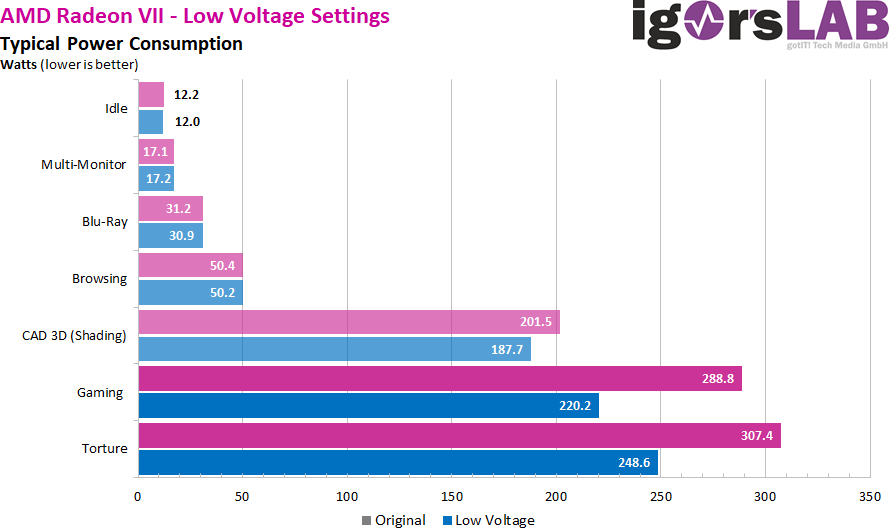
If you look at the power consumption in the curve shape, the extreme interplay of the load peaks has also decreased significantly. This is exactly what makes me curious elsewhere now…
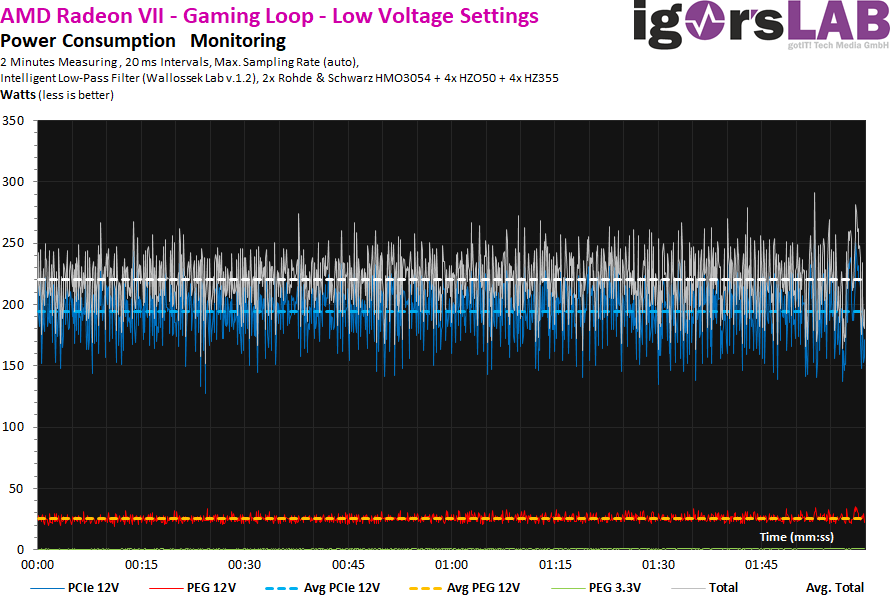
After all, if you zoom into the microsecond range, you can see at first glance that even the nasty spikes, which can add some power supply properly, are much lower.
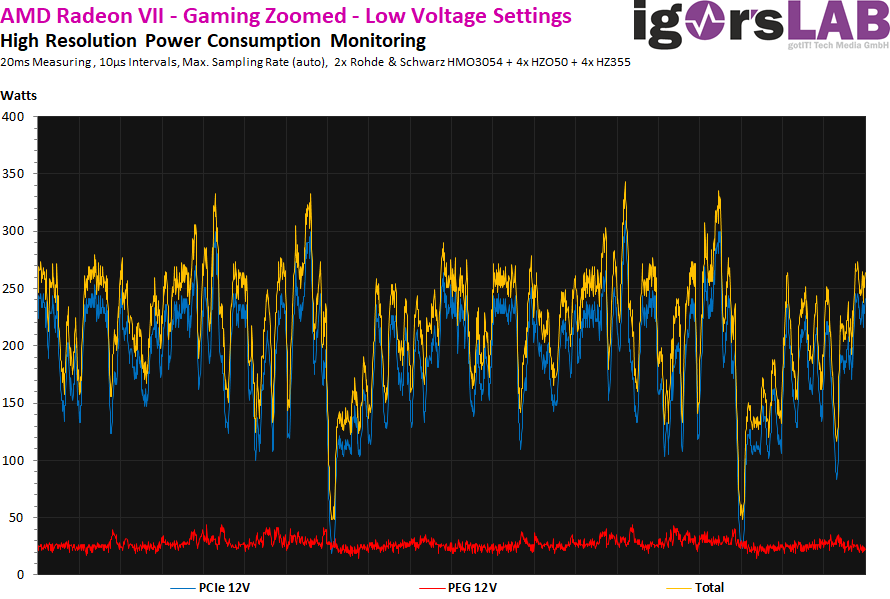
If you compare all this in a bar chart, you will see that the load peaks are an astonishing 100 watts lower. That alone is a reason to think about such an attitude with voltage reduction in the Wattman. Because as long as there is no BIOS tweaker available, you have to be satisfied with AMD's rather moody tool. But hope dies last and yes, the tool has at least become a little more stable.
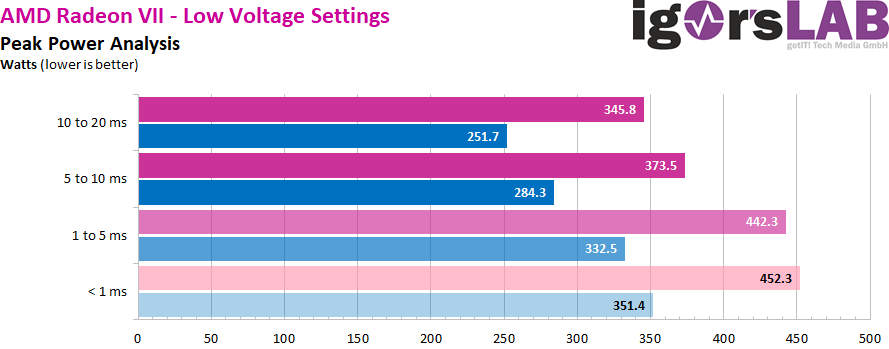
Temperatures
If you have successfully executed the ghetto mod with other fans, there is no way around Gurdi's aggressive fan curve. With 60 °C on the PCB below the interposer and approx. 61 °C GPU temperature goes a long way, also in the direction of overclocking. But this is a different issue. For now. The achieved 1759 to 1767 MHz (without big drops in the clock frequency as with the original) are already a decent bonus for the performance.
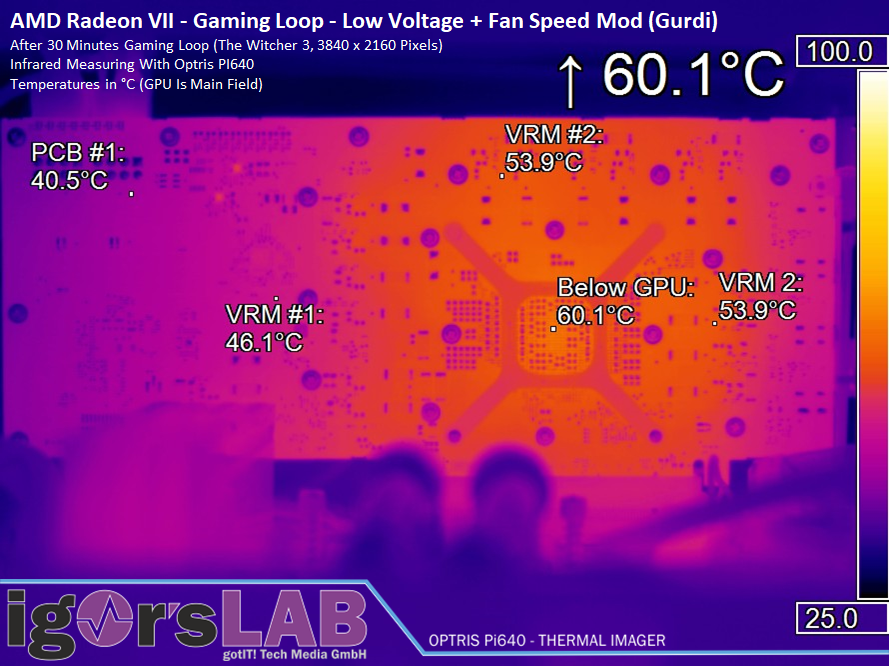
I have now taken care of the roar of the map and behold, with a little more continuance and slightly higher temperatures (2 °C more than on the original) the clock stays on average to 1759 MHz (even without break-ins), but the fan speeds drop from the deafening almost 3000 rpm to quite moderate 1859 rpm. Thus, at the end of the day, one is also below 41 dB(A), i.e. almost 9 dB(A) below the factory state! If you compare the IR recording with that of the original from page one, it doesn't really look worse.
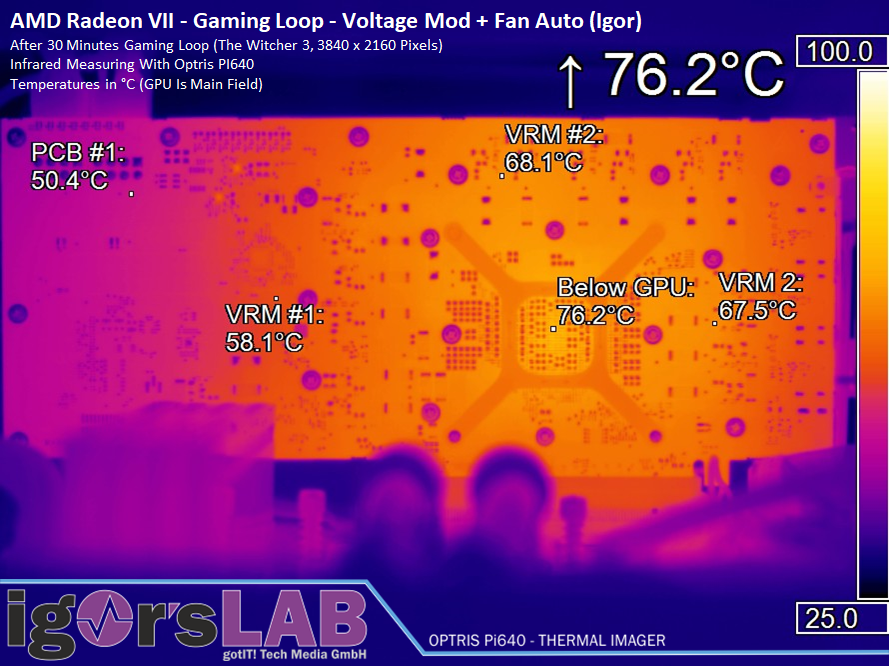
Intermediate conclusion
If you don't dare to screw around the card, my version is actually perfectly served. Same performance with almost 70 watts less power consumption (and heat dissipation) is not something you should leave unused idle! Just make it easy and rejoice, it doesn't even cost anything. But if you dare to use a ghetto mod or radiator conversion, you can even use Gurdis Settings and also have air for another overclocking of the map. But before we beat the chip, we let Gurdi & Co tinker on the next page.
- 1 - Vorwort zur RTG
- 2 - Untervolten mit dem Wattman leicht gemacht
- 3 - Leistungsaufnahme und Temperaturen mit Low Voltage Settings
- 4 - Lüfter-Umbau mit Originalkühler (Ghetto-Mod) und dem Raijintek Morpheus
- 5 - Erklärung und Hilfestellung zu den PowerPlay-Tabellen (PPT)
- 6 - Übertakten mit den PowerPlay Tabellen und Fazit































Kommentieren